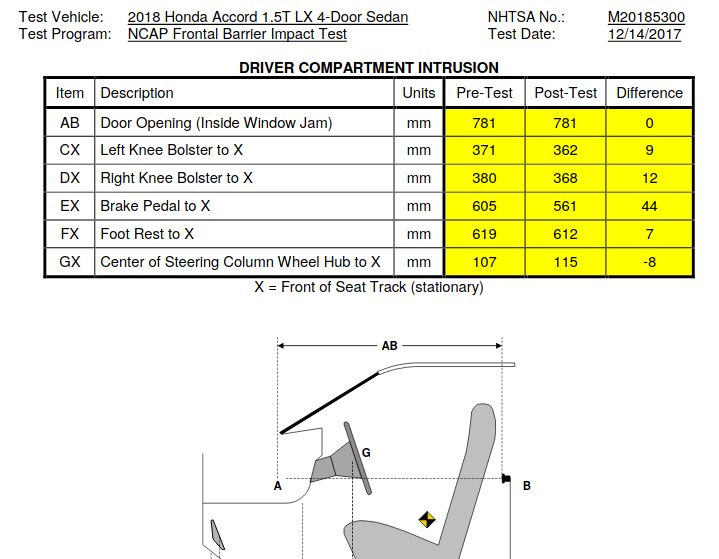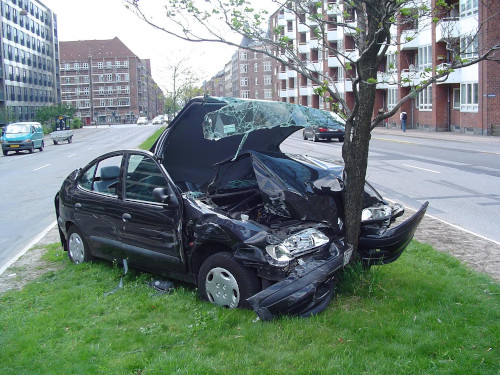Safest Cars
Wondering what are the safest cars?
We've developed a holistic system that draws data from a variety of sources to more effectively evaluate car safety. Designed by economists and machine learning experts Ben Shiller and Bhoomija Ranjan, our system uses artificial intelligence along with real-world accident data to produce more accurate and meaningful car safety ratings.
Find a car
Our Safety Ratings

We start with measurements taken during safety tests by the NHTSA, and other vehicle characteristics.
These measurements tell us about the durability of vehicles under pre-specified accident conditions.

We compare these measurements against statistics of fatality rates in actual car accidents to assess their importance to safety in real world conditions.

We use advanced statistical and artificial intelligence techniques to address potential biasing factors to our model, such as the tendency of safer drivers to drive safer cars.
We give ratings in terms of yearly probabilities of accident fatality under typical driving conditions. Not only is this inherently meaningful, but it makes it possible to compare vehicles of different classes on the same scale.
Our Advantage
100 Safest Vehicles of 2020
- Audi e-tron Sportback
- Audi Q8
- Audi Q7
- BMW X5
- Volvo XC60
- Volvo S90
- Volvo XC90
- Audi A7
- Mazda CX-9
- Audi A6
- Lincoln Aviator
- Lexus RX
- Acura MDX
- Audi Q5
- Jeep Grand Cherokee
- Lincoln Continental
- Nissan Titan
- MINI Cooper
- Hyundai Genesis G80
- Mercedes-Benz GLE-Class
- Volkswagen Atlas
- Hyundai Genesis G90
- Mercedes-Benz GLC-Class
- Lincoln Nautilus
- Honda Passport
- Kia Telluride
- Lexus RC
- Alfa Romeo Giulia
- Audi Q3
- Acura RDX
- Mercedes-Benz E-Class
- Subaru Ascent
- Honda Pilot
- Ford Explorer
- Ford Edge
- Tesla Model 3
- Volkswagen Atlas Cross Sport
- Hyundai Palisade
- Dodge Durango
- Volvo XC40
- Toyota Sienna
- Honda Odyssey
- Tesla Model Y
- Cadillac XT6
- BMW X3
- BMW 3 Series
- Toyota C-HR
- Toyota Tundra
- Hyundai Genesis G70
- BMW 2 Series
- Subaru Crosstrek Hybrid
- Chevrolet Traverse
- Cadillac XT5
- Buick Enclave
- Toyota RAV4
- Hyundai Nexo
- Lincoln Corsair
- Mazda CX-5
- Lincoln MKZ
- Volvo S60
- GMC Acadia
- Volkswagen Tiguan
- BMW 5 Series
- Honda Ridgeline
- Ford Escape
- Volkswagen GTI
- Lexus IS
- Chrysler 300
- Mercedes-Benz C-Class
- Maserati Ghibli
- Ford Fusion
- Toyota Highlander
- Volkswagen Golf
- INFINITI Q50
- Audi A3
- Dodge Challenger
- Kia Sedona
- Lexus UX
- INFINITI QX60
- MINI Countryman
- Chevrolet Bolt EV
- GMC Terrain
- Dodge Charger
- Honda CR-V
- Subaru Outback
- Toyota Camry
- Honda Insight
- Toyota Avalon
- FIAT 500L
- Chevrolet Camaro
- Chevrolet Equinox
- Kia Stinger
- Nissan Maxima
- Jeep Compass
- Kia Sorento
- Nissan Murano
- BMW X2
- BMW i3
- Dodge Ram 1500
- Acura TLX
The NHTSA and IIHS safety ratings are based on similar information, but their choice to use discrete ratings makes comparisons difficult. NHTSA safety ratings are on a five-star scale, but nearly all vehicles receive 4 or 5 stars. IIHS awards top safety picks and top safety picks plus, lumping vehicles into few safety categories. Many vehicles receive a top rating (including some which aren't very safe). In 2020, 96 different vehicles were awarded a top safety pick or top safety pick plus award from the IIHS. It's not easy to determine which of these top scoring vehicles are the safest.
Our mission is to improve safety ratings where the IIHS and NHTSA's crashworthiness ratings are weak. We use complex methods from academic research to relate vehicle features and crash test measurements to empirical death rates to predict how safe a vehicle is overall. We present fine-grained ratings that allow direct comparisons between vehicles. We strive to provide superior ratings to provide information you need to keep your loved ones safe when buying a new car.
The National Highway Traffic Safety Administration (NHTSA) and the Insurance Institute for Highway Safety (IIHS) rely on staged crash tests. They will inform you how safe a car is given that real-world crash conditions exactly match the conditions in the staged crash test. For example, the NHTSA's frontal crash test smashes the entire front of the vehicle moving at 35 mph into another barrier at no angle. The IIHS has shown that vehicles that perform well on the NHTSA's test may not actually be safe if only 40% (or 25%) of the vehicle overlaps with the other vehicle in the crash. While the IIHS provides some additional information, neither the IIHS nor NHTSA's tests inform about how crashworthy the vehicle is at higher speeds or different crash angles.
In fact, the IIHS found that automakers have tailored their safety features to perform well only when the test conditions exactly match their specifications. In 2012, they introduced the smaller overlap test, where 25% of the driver's side crashes into a fixed barrier. Vehicles performed very badly on this new test. A few years later automakers had redesigned their cars to perform well on these tests.Why? Because they want to sell more cars, and cars recognized as safe sell more. But the IIHS found a few years later that automakers had typically only reinforced the driver-side. When they ran exactly the same test on the passenger-side, the same vehicles that had improved on the driver side still performed poorly on the passenger-side.1 Try explaining that to you spouse/kids/parents/etc. seated on the passenger-side.
Additionally, the tests run by the IIHS and NHTSA happen at predetermined speeds, all less than or equal to 40 mph. Automakers could design their vehicles to perform well on crashes at these speeds, for example by designing the safety cage not to collapse at that speed. But maybe the cabin would collapse at higher speeds (e.g. 65 mph) crushing occupants. That would be fine as long as you (as well as everyone else on the road) never exceeds 40 mph.
Creating our safety ratings was no easy task. The fact that safer drivers typically choose safe-rated vehicles raises significant challenges when relating vehicle features to death rates. Are drivers of safer-rated vehicles (e.g. top safe picks / Volvos / minivans) less likely to die or be hurt because the car is keeping them safe, or because they have safe driving habits? If their driving habits explain these differences, then the car isn't inherently safer and would not help protect you and your loved ones. Our ratings solve this selection problem using a variety of methods, including methods from academic research.
Keep in mind that some safety features are optional or only available on select trim levels. We highly suggest you choose a vehicle with novel advanced safety features. Evidence to date suggests that front crash prevention / automatic emergency braking (which breaks for you when a collision is imminent) is the most important feature to have, for obvious reasons --- it can slow your speed down (say from 60 to 40) reducing the severity of the collision. Forward collision warnings may help as well, but not as much (computers have faster reflexes than we do). We also recommend blind-spot monitoring, rear-view cameras, and rear automatic braking. If you live in an area with snow, all wheel drive can be an important safety feature. We do NOT recommend relying on self-driving or adaptive cruise control features. They are just not reliable enough to prevent a serious accident, at least not yet. Even the best systems from Tesla, Subaru, and Volvo have well-known weaknesses.
Other safety technologies protect others or are too new to be verified in the field. But you may want to consider pedestrian detection, adaptive headlights which point towards where you are turning, driver monitoring systems (DMS) which alert distracted/sleeping drivers, rear automatic braking, powerful headlights / high-beams, simple infotainment systems, etc.
You may notice that heavier and taller vehicles like mid-side SUVs perform well in accidents. It is well-known that heavier vehicles generally are safer in multiple car accidents. Our exploration revealed the counterintuitive finding that taller vehicles are safer. Most people worry that they are more likely to roll over, which is true. But rollover accidents are relatively uncommon these days (with electronic stability control). In other types of accidents SUVs perform better. If a taller SUV collides with a shorter sedan, then the much of the force happens low on the SUV's frame, below the passengers’ torsos. Hence, much of the damage is to the vehicle's frame, rather than the passenger cabin. SUV crash tests which use a fixed barrier (a wall or pole) are unable to capture the impact of height on safety. But our ratings do.